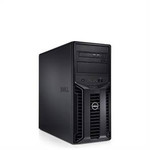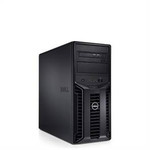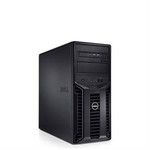Catalog
-
Catalog
- Antiquitäten & Kunst
- Auto & Motorrad: Fahrzeuge
- Baby
- Business & Industry
- Bücher
- Camping & Outdoor
- Feinschmecker
- Garden & patio
- Haustierbedarf
- Heimwerken & Garten
- HiFi & Audio
- Home, Construction, Renovation
- Household appliances
- Kleidung & Accessoires
- Modellbau
- Musik
- PC- & Videospiele
- Photo & camcorders
- Sammeln & Seltenes
- Spielzeug
- TV, Video, DVD
- Telekommunikation
- Uhren & Schmuck
- Wellness & Beauty
- computers & electronics
- entertainment & hobby
- fashion & lifestyle
- food, beverages & tobacco
- health & beauty
- institutional food services equipment
- medical equipment, accessories & supplies
- office
- sports & recreation
- vehicles & accessories
- weapons & ammunition
Filters
Search
DELL PowerEdge R610 2.26GHz E5520 502W Rack (1U) server
MPN: 464-0223
🚚 Select the country of delivery:
Delivery from:
Germany
Sale and delivery by:
Where to buy and prices (Advertising *)
On Top
Technical specifications
On Top
Processor special features
| Intel Demand Based Switching | Y |
|---|---|
| Enhanced Intel SpeedStep Technology | Y |
| Intel FDI Technology | N |
| Intel VT-x with Extended Page Tables (EPT) | Y |
| Intel vPro Technology | N |
| Intel Clear Video Technology for MID | N |
| Intel® My WiFi Technology (Intel® MWT) | N |
| Intel Enhanced Halt State | Y |
| Intel Hyper-Threading Technology | Y |
| Intel® Anti-Theft Technology (Intel® AT) | N |
| Intel® Smart Cache | Y |
| Intel Virtualization Technology for Directed I/O (VT-d) | Y |
| CPU configuration (max) | 2 |
| Intel Dual Display Capable Technology | N |
| Intel Clear Video Technology | N |
| Intel 64 | Y |
| Intel® Insider™ | N |
| Intel® Quick Sync Video Technology | N |
| Processor ARK ID | 40200 |
| Intel Virtualization Technology (VT-x) | Y |
| Intel Trusted Execution Technology | N |
| Intel Flex Memory Access | N |
| Intel Fast Memory Access | N |
| Intel Rapid Storage Technology | N |
| Intel® Turbo Boost Technology | Y |
| Intel® Clear Video HD Technology (Intel® CVT HD) | N |
| Intel® Wireless Display (Intel® WiDi) | N |
Processor
| ECC supported by processor | Y |
|---|---|
| Tcase | 72 °C |
| Maximum internal memory supported by processor | 144 GB |
| Processor frequency | 2.26 GHz |
| Stepping | D0 |
| Processor system type | DP |
| Processor operating modes | 64-bit |
| Embedded options available | N |
| FSB Parity | N |
| Number of Processing Die Transistors | 731 M |
| Conflict Free processor | N |
| Memory channels supported by processor | Triple |
| Memory bandwidth supported by processor (max) | 25.6 GB/s |
| Memory clock speeds supported by processor | 1066, 800 MHz |
| Processor cache type | Smart Cache |
| Processor code | SLBFD |
| Physical Address Extension (PAE) | 40 bit |
| Thermal Monitoring Technologies | N |
| Idle States | Y |
| Execute Disable Bit | Y |
| Number of QPI links | 2 |
| Processor boost frequency | 2.53 GHz |
| Processor cache | 8 MB |
| Number of processors installed | 1 |
| Processor cores | 4 |
| Maximum number of SMP processors | 2 |
| Thermal Design Power (TDP) | 80 W |
| CPU multiplier (bus/core ratio) | 17 |
| Processor lithography | 45 nm |
| Processor package size | 42.5 mm |
| Bus type | QPI |
| Memory types supported by processor | DDR3-SDRAM |
Storage
| Maximum storage capacity | 3.6 TB |
|---|---|
| Number of hard drives supported | 6 |
| Total storage capacity | 160 GB |
| Number of hard drives installed | 1 |
| Hot-swap | N |
| Internal drive bays | 6 x 2.5'' |
| Hard drive size | 2.5 " |
Memory
| Maximum internal memory | 192 GB |
|---|---|
| Memory slots | 12x DIMM |
| Internal memory | 4 GB |
| Internal memory type | DDR3-SDRAM |
| Memory clock speed | 1333 MHz |
Other features
| Mac compatibility | N |
|---|---|
| Disk array controller | PERC |
Power
| Number of power supply units | 2 |
|---|---|
| Power supply | 502 W |
Expansion slots
| PCI Express x8 slots | 2 |
|---|
Performance
| Noise level | 39 dB |
|---|
Graphics
| Maximum graphics adapter memory | 8 MB |
|---|
Design
| Chassis type | Rack (1U) |
|---|
Ports & interfaces
| Serial ports quantity | 1 |
|---|---|
| VGA (D-Sub) ports quantity | 2 |
Networking
| Networking features | Gigabit Ethernet |
|---|
Certificates
| Compliance industry standards | IEEE 802.3, IEEE 802.3u, IEEE 802.3ab |
|---|---|
| Energy Star certified | Y |
Additionally
| Ethernet LAN connection | Y |
|---|---|
| System bus data transfer rate | 5.86 GT/s |
| Graphics | G200 |
| Processing die size | 263 mm² |
| Chipset | Intel 5520 |
| InTru™ 3D Technology | N |
| Ethernet LAN (RJ-45) ports quantity | 4 |
| Intel AES New Instructions | N |
PowerEdge R610, E5520, 2.26GHz, 4GB 4x1GB DIMM RAM, 160GB SATA HDD, 1U
Reduced power consumption, increased performance
An Intel-based, 2-socket/1U server, the PowerEdge™ R610 is ideal for data centers and remote sites that require virtualization. Features include:
- Choice of hypervisor from VMware, Citrix or Microsoft for fast, easy virtualization;
- Reduced power consumption with increased performance over previous generations;
- Lifecycle Controller for advanced systems management.
Customer Inspired Design
Dell’s servers offer world class system and image commonality and customer inspired usability. The Dell™ PowerEdge™ R610 takes advantage of Dell’s system commonality; When IT managers learn one system, they have learned the logic required to manage Dell’s next generation servers. The logical layout of components and power supply placement enables a simple and straight forward installation and a simplified redeployment experience in the future.
In addition, Dell’s latest PowerEdge servers provide a graphical and interactive LCD for system health monitoring, alerting and control of basic management configuration right in the front of the server. Customers have an AC power meter and ambient temperature thermometer built into the server which they can monitor on this display without any software tools.
Energy-Tuned Technologies
Dell’s newest servers feature energy-tuned technologies designed to reduce power consumption while increasing performance and capacity. Enhancements include efficient power supply units right-sized for system requirements, effective system-level design efficiency, policy-driven power and thermal management, and highly efficient standards-based Energy Smart components. Dell's advanced thermal control is designed to deliver optimal performance at minimum system and fan power consumption resulting in our quietest mainstream 1U servers to date. These elements drive efficiency as a design standard while delivering the performance businesses require.
Simplified Systems Management
The next generation Dell OpenManage™ suite offers enhanced operations and standards-based commands designed to integrate with existing systems for effective control.
Lifecycle Controller is the engine for advanced systems management integrated on the server. Lifecycle Controller simplifies administrator tasks to perform a complete set of provisioning functions such as system deployment, system updates, hardware configuration and diagnostics from a single intuitive interface called Unified Server Configurator (USC) in a pre-OS environment. This eliminates the need to use and maintain multiple pieces of disparate CD/DVD media.
The new Dell Management Console (DMC), powered by Altiris from Symantec, delivers a single view and a common data source into the entire infrastructure. Dell Management Console is built on the Symantec™ Management Platform (formerly Altiris® Notification Server), an easily extensible, modular foundation that can provide basic hardware management or more advanced functions such as asset and security management. Dell Management Console helps reduce or eliminate manual processes — so less time and money is spent keeping the lights on and more time can be spent on strategic uses of technology.
An Intel-based, 2-socket/1U server, the PowerEdge™ R610 is ideal for data centers and remote sites that require virtualization. Features include:
- Choice of hypervisor from VMware, Citrix or Microsoft for fast, easy virtualization;
- Reduced power consumption with increased performance over previous generations;
- Lifecycle Controller for advanced systems management.
Customer Inspired Design
Dell’s servers offer world class system and image commonality and customer inspired usability. The Dell™ PowerEdge™ R610 takes advantage of Dell’s system commonality; When IT managers learn one system, they have learned the logic required to manage Dell’s next generation servers. The logical layout of components and power supply placement enables a simple and straight forward installation and a simplified redeployment experience in the future.
In addition, Dell’s latest PowerEdge servers provide a graphical and interactive LCD for system health monitoring, alerting and control of basic management configuration right in the front of the server. Customers have an AC power meter and ambient temperature thermometer built into the server which they can monitor on this display without any software tools.
Energy-Tuned Technologies
Dell’s newest servers feature energy-tuned technologies designed to reduce power consumption while increasing performance and capacity. Enhancements include efficient power supply units right-sized for system requirements, effective system-level design efficiency, policy-driven power and thermal management, and highly efficient standards-based Energy Smart components. Dell's advanced thermal control is designed to deliver optimal performance at minimum system and fan power consumption resulting in our quietest mainstream 1U servers to date. These elements drive efficiency as a design standard while delivering the performance businesses require.
Simplified Systems Management
The next generation Dell OpenManage™ suite offers enhanced operations and standards-based commands designed to integrate with existing systems for effective control.
Lifecycle Controller is the engine for advanced systems management integrated on the server. Lifecycle Controller simplifies administrator tasks to perform a complete set of provisioning functions such as system deployment, system updates, hardware configuration and diagnostics from a single intuitive interface called Unified Server Configurator (USC) in a pre-OS environment. This eliminates the need to use and maintain multiple pieces of disparate CD/DVD media.
The new Dell Management Console (DMC), powered by Altiris from Symantec, delivers a single view and a common data source into the entire infrastructure. Dell Management Console is built on the Symantec™ Management Platform (formerly Altiris® Notification Server), an easily extensible, modular foundation that can provide basic hardware management or more advanced functions such as asset and security management. Dell Management Console helps reduce or eliminate manual processes — so less time and money is spent keeping the lights on and more time can be spent on strategic uses of technology.
Similar offers
On Top
-
Payment Methods
We accept:
























